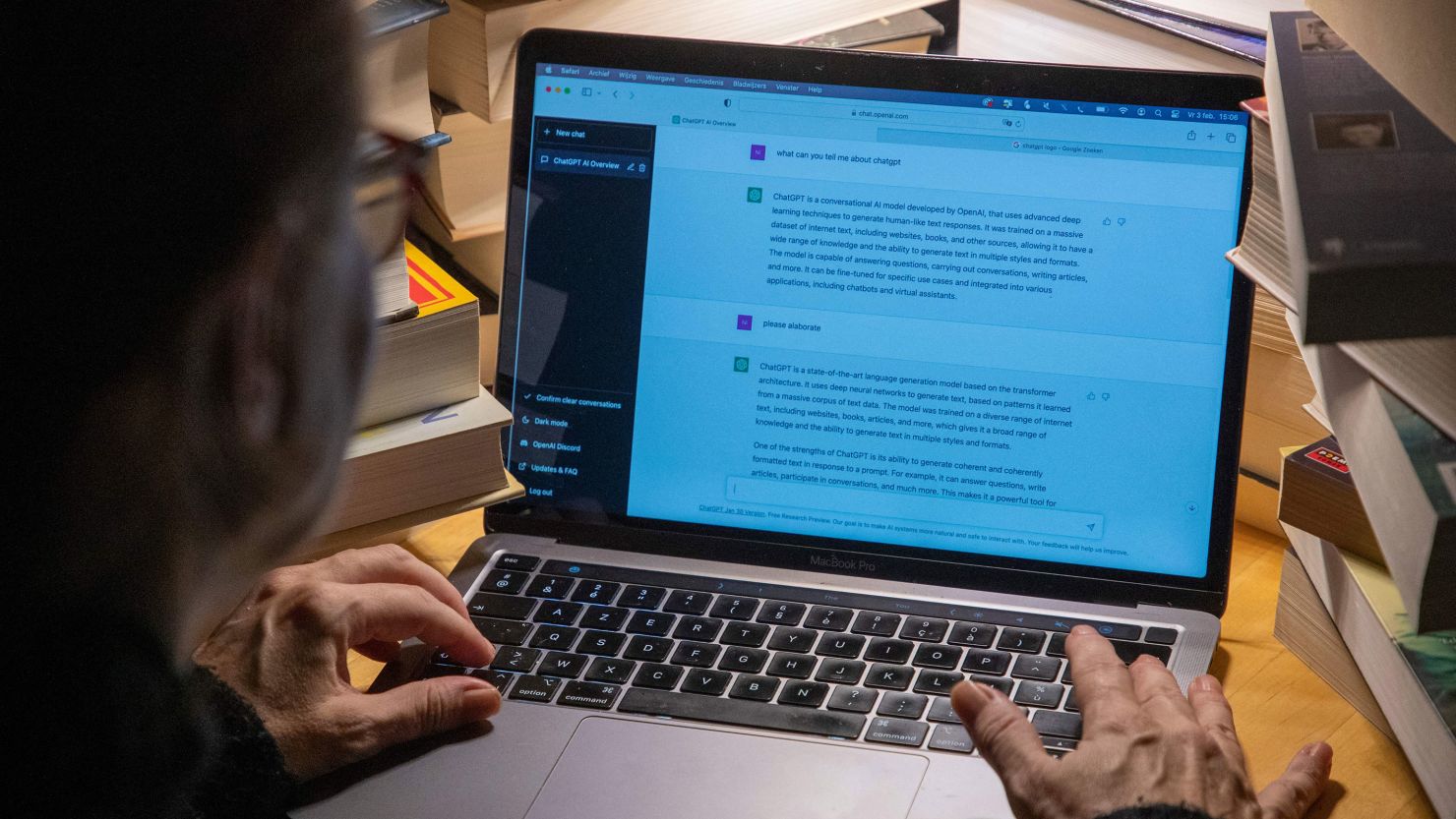Editor’s Note: Sidhi Dhanda is a high school senior from Massachusetts. The views expressed in this commentary belong to the author. View more opinion at CNN.
I’m used to getting dirty looks from my high school classmates whenever I log on to ChatGPT. Even though many other students use it, few of them want to acknowledge doing it. Our teachers, after all, have warned us against turning to AI chatbots, framing them as shortcuts to bypass hard work and reminding us that the information they generate isn’t always accurate. Last year, I wasn’t aware of an AI policy at my school. This year, some of my teachers have explicitly banned using AI chatbots in their classes while others have not discussed a policy on it.
My teachers, along with some of my fellow classmates, aren’t alone in viewing ChatGPT as a tool that subverts learning, of course. A professor at UPenn said, “AI does your thinking for you.” A Columbia undergraduate wrote, “We’re not being forced to think anymore.”
But as a senior in high school who has been using ChatGPT since January of this year, I view it as an essential tool in education that must be incorporated into curriculums. AI chatbots have already made me a stronger student, and I have had no formal training with them.
Take my online computer science class that I took this past summer. I was struggling to understand pointers and nodes — infamously challenging concepts. I watched the lecture and supplemental videos and used Google to find other explanations. I was still confused, and I decided to reach out to ChatGPT for help. The first explanation was still unclear, so I asked it to explain the concept as if I were in elementary school.
It offered an explanation using a metaphor of a bookshelf in a library, and I had my lightbulb moment. This conceptual topic, which I had trouble understanding for a few days, finally clicked. Why should using ChatGPT to understand a challenging subject be frowned upon?
Coincidentally, while I was turning to ChatGPT to help me in my CS50x coding class, The Harvard Crimson reported that AI would be integrated into Harvard’s CS50 course as a tool to help students.
Epic AI chatbot fails notwithstanding, this technology can provide personalized explanations for many subjects, and it’s available to anyone with internet access at any hour of the day.
Beyond providing explanations, chatbots can also give unlimited feedback on writing. The feedback I receive isn’t better than (or even as good as) what a teacher could offer, but it does still help me learn more about writing. I don’t have to worry about annoying chatbots or taking up too much of their time — unlike my teachers or friends. Most of the feedback is more mechanical — grammar, transitions and word choice — but it has made me more aware of shortcomings in my writing style, similar to how grammar checkers like Grammarly made me aware of my overuse of the passive voice.
Another major educational benefit for students lies in chatbots’ ability to generate ideas by providing multiple perspectives and laundry lists of thoughts in seconds. I have combined my ideas with ChatGPT’s to develop entirely new essay ideas. In this case, AI isn’t thinking for me; it’s making me a better thinker.
I understand that some believe using AI chatbot-generated ideas as your own is plagiarism. But is brainstorming with an AI chatbot plagiarism? I know that brainstorming with another student isn’t. It’s a question that deserves careful consideration, not a knee-jerk response.
I acknowledge the fear that ChatGPT is removing students’ need to think because it can write for us. It’s true that in a matter of seconds, a chatbot can write an essay on almost any prompt. Clearly, if I was assigned to write an essay exploring the themes and symbolism present in “To Kill a Mockingbird,” and I used ChatGPT to do it, that would be cheating. However, without a serious back and forth between the user and ChatGPT (arguably similar to the back and forth between a writer and editor), the result is hardly eloquent. The user must ask refining questions, provide samples of the type of writing style they want, review its results and further explain their ideal end result. Without that process, ChatGPT produces essays that are too general and lacking in nuance. Getting ChatGPT to write a good essay isn’t as simple as prompting it with one quick sentence.
Aside from the focus on cheating, there are legitimate debates to be had about whether this kind of use of ChatGPT should be allowed. While ChatGPT is doing some of the work that I once would have had to do myself, it is also helping me refine my critical thinking skills by forcing me to iterate my ideas and explain my thoughts in different ways multiple times. For me, the result has been a better, more nuanced understanding of what I’m writing about.
Starting from elementary school, my peers and I were taught about safe and ethical internet usage, finding reliable sources and making effective search queries. Teachers can provide similar guidance for ChatGPT. Just as we were taught to distinguish between reliable and unreliable sources, we can learn to discern between constructive AI assistance and unethical use. We can be taught how to make effective prompts to elicit helpful feedback, ideas and writing. Imagine the educational benefits students can gain by incorporating AI in the classroom, thoughtfully and strategically.
Vanderbilt University has already started this by offering university-wide training to faculty and students in AI chatbots. More than 100,000 students have already enrolled in a recently released three-week, 18-hour online course in prompt engineering, which is the art of crafting effective instructions for AI interactions. Meanwhile, more than 8,000 teachers and students will test Khan Academy’s AI tutor this school year.
Although a number of educators are coming around to the numerous benefits of AI chatbots, it’s clear we still have a long way to go. Apprehension and resistance are natural. The introduction of calculators and search engines, though not a perfect analogy to the advent of AI chatbots, was met with similar skepticism. Yet, these tools revolutionized education by shifting the focus from rote calculations and memorization to higher-level problem-solving and critical thinking.
In themselves, AI chatbots are just a tool. It’s up to us to decide what kind of tool they get to be.


